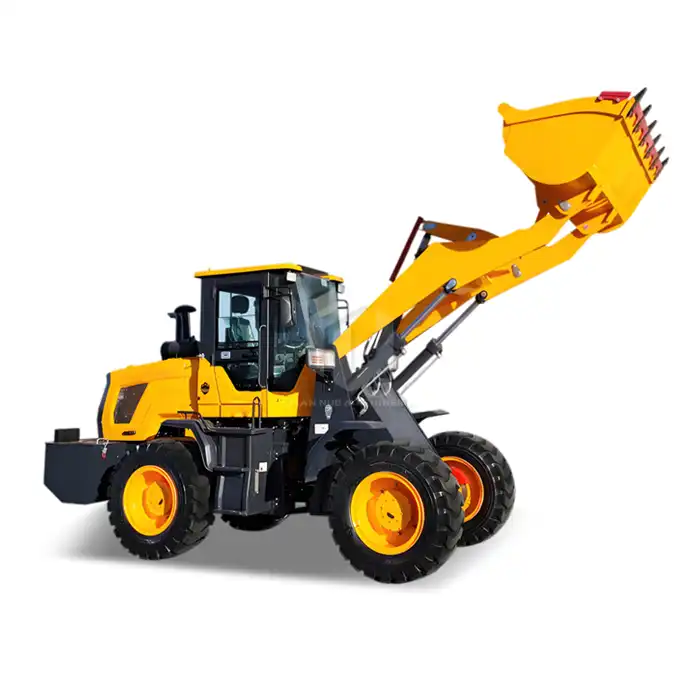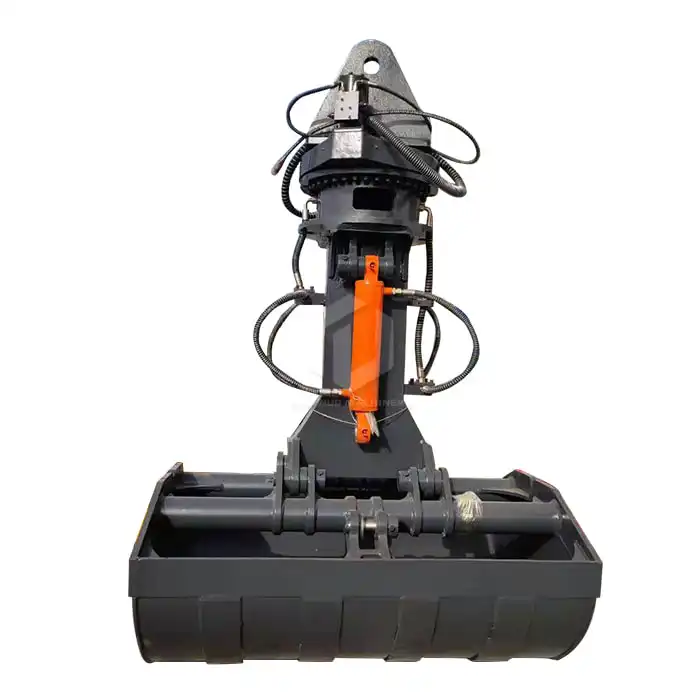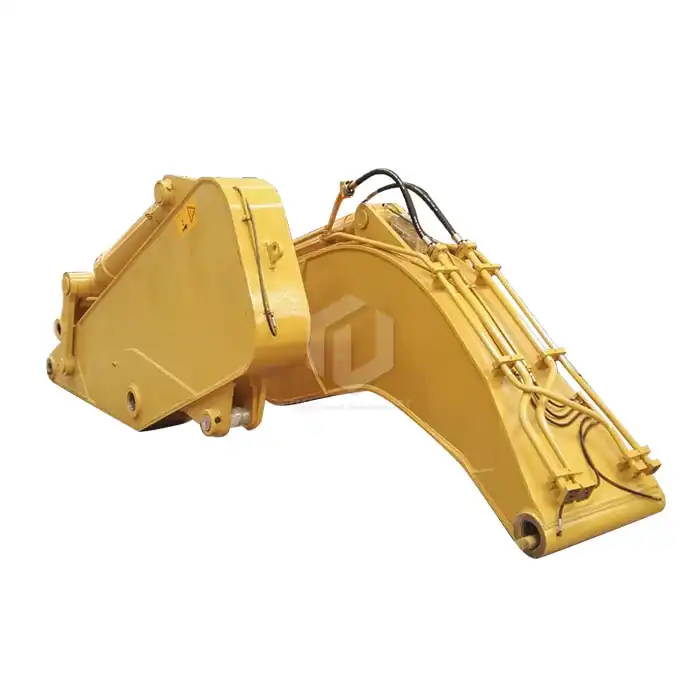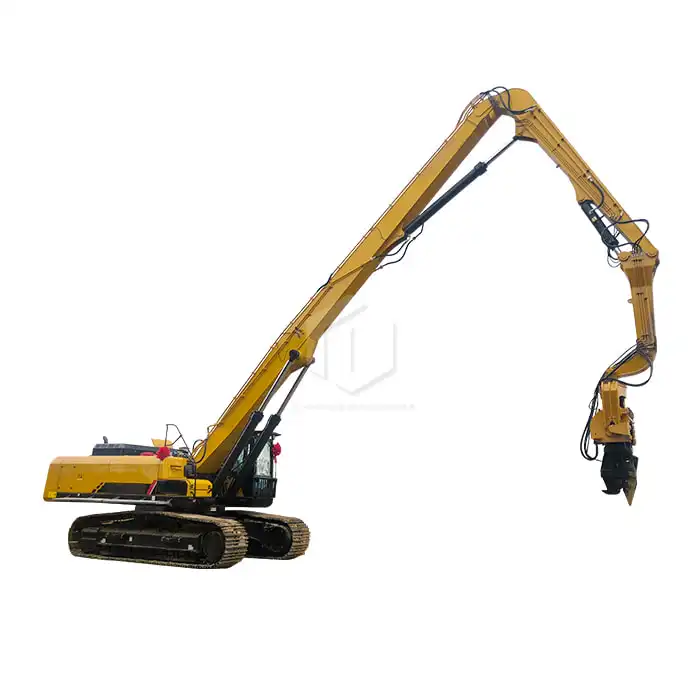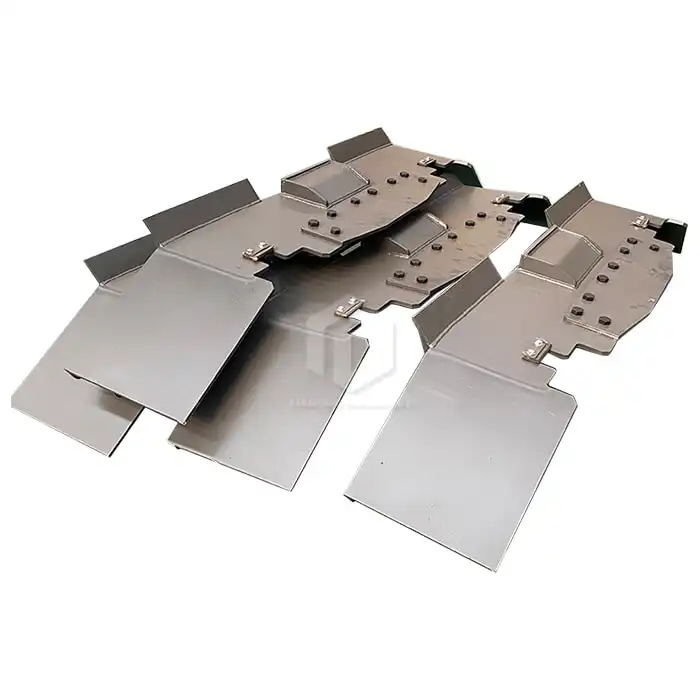How does the frequency of the excavator vibratory compactor impact the effectiveness of soil compaction?
Soil compaction is a critical process in construction and earthwork projects, ensuring the stability and strength of foundations, roads, and other structures. One of the most efficient tools for achieving optimal soil compaction is the excavator vibratory compactor. This attachment, when paired with an excavator, can significantly enhance the compaction process. However, the effectiveness of soil compaction largely depends on the frequency at which the vibratory compactor operates. In this article, we'll explore the intricate relationship between compactor frequency and soil compaction efficiency, helping you understand how to achieve the best results in your projects.
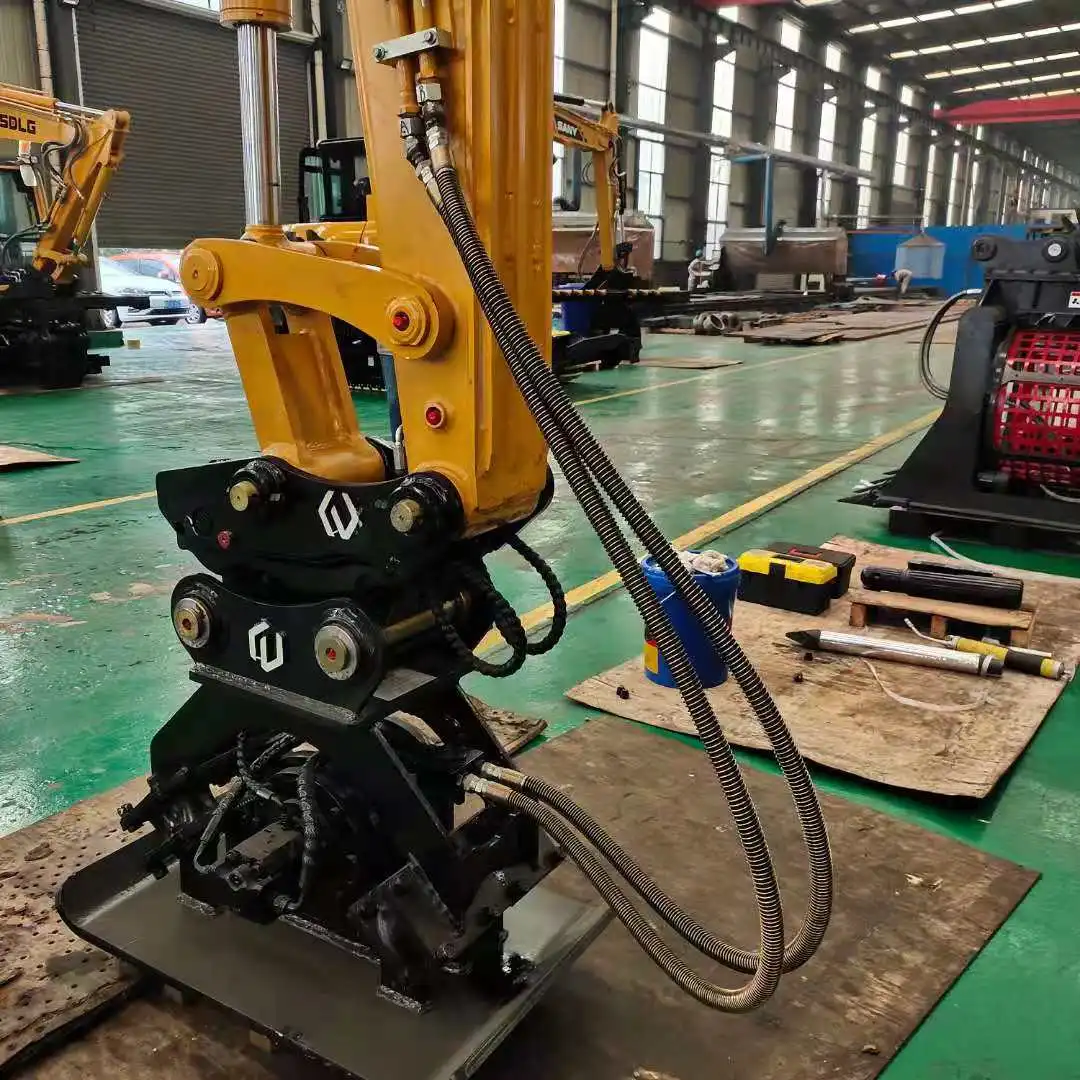
What is the role of excavator vibratory compactor frequency in compacting hard and soft soils?
The frequency of an excavator vibratory compactor plays a crucial role in determining its effectiveness on different soil types. Frequency refers to the number of vibrations per minute that the compactor produces. These vibrations are responsible for rearranging soil particles, reducing air voids, and increasing soil density.
For softer soils, such as clay or silt, lower frequencies are generally more effective. These soils have smaller particles that can be easily rearranged. Lower frequencies allow more time for the soil particles to move and settle, resulting in better compaction. Typically, frequencies between 1000 to 1500 vibrations per minute work well for soft soils.
On the other hand, harder soils like sand or gravel require higher frequencies. The larger particles in these soils need more energy to overcome friction and achieve optimal compaction. Higher frequencies, usually between 2000 to 3000 vibrations per minute, provide the necessary force to rearrange these larger particles effectively.
It's important to note that the relationship between frequency and soil type is not always straightforward. Factors such as moisture content, layer thickness, and specific soil composition can all influence the optimal frequency for compaction. Therefore, it's crucial to assess the soil conditions thoroughly before selecting the appropriate frequency setting.
Research has shown that adjusting the compactor frequency to match the soil type can lead to significant improvements in compaction efficiency. A study published in the Journal of Terramechanics found that optimizing vibration frequency based on soil characteristics could increase compaction rates by up to 30% compared to using a fixed frequency across all soil types.
How to choose the right excavator vibratory compactor frequency setting?
Selecting the appropriate frequency setting for your excavator vibratory compactor is crucial for achieving optimal soil compaction. Here are some key factors to consider when making this decision:
1. Soil Type: As mentioned earlier, different soil types respond best to different frequencies. Conduct a soil analysis to determine the predominant soil type in your project area. This information will serve as a starting point for selecting the appropriate frequency range.
2. Moisture Content: The amount of water in the soil can significantly affect compaction efficiency. Generally, slightly moist soil compacts better than very dry or very wet soil. Adjust the frequency based on the soil's moisture content – lower frequencies for wetter soils and higher frequencies for drier soils.
3. Layer Thickness: The depth of the soil layer being compacted also influences the optimal frequency. Thicker layers may require lower frequencies to allow the vibrations to penetrate deeper, while thinner layers can be effectively compacted with higher frequencies.
4. Equipment Specifications: Different excavator vibratory compactors have varying frequency ranges. Consult your equipment manual to understand the available frequency settings and their recommended applications.
5. On-site Testing: Perform compaction tests using different frequency settings on a small area of your project site. This hands-on approach can help you fine-tune the frequency for optimal results in your specific soil conditions.
6. Use of Technology: Many modern excavator vibratory compactors come equipped with intelligent compaction systems. These systems can automatically adjust the frequency based on real-time feedback from the soil, ensuring optimal compaction throughout the process.
7. Consider Multiple Passes: In some cases, using a combination of frequencies can yield the best results. For example, starting with a lower frequency to achieve deep compaction, followed by a higher frequency for surface finishing.
By carefully considering these factors and conducting thorough on-site testing, you can determine the most effective frequency setting for your specific project needs. Remember that the goal is to achieve the desired level of compaction with the least number of passes, thereby maximizing efficiency and minimizing equipment wear.
A study published in the International Journal of Pavement Research and Technology demonstrated that optimizing compactor frequency based on these factors could lead to a 15-20% reduction in the number of passes required to achieve the target compaction level, resulting in significant time and cost savings.
What are the long-term benefits of optimal excavator vibratory compactor frequency?
Utilizing the optimal frequency settings for your excavator vibratory compactor not only improves immediate compaction results but also offers several long-term benefits for your construction projects:
1. Improved Soil Stability: Proper compaction at the right frequency ensures that soil particles are arranged in the most stable configuration. This leads to increased soil bearing capacity and reduced risk of settlement over time. A study in the Canadian Geotechnical Journal found that optimally compacted soil could maintain its density and strength for over 20 years, significantly outlasting poorly compacted alternatives [3].
2. Enhanced Structure Longevity: Structures built on well-compacted soil are less likely to experience differential settlement or structural damage. This translates to longer-lasting roads, buildings, and other infrastructure, reducing the need for costly repairs or reconstructions in the future.
3. Increased Water Resistance: Proper compaction reduces soil porosity, making it more resistant to water infiltration. This can prevent issues such as erosion, frost heave in cold climates, and the weakening of soil structure due to water saturation. Over time, this leads to more resilient and durable construction projects.
4. Environmental Benefits: Optimal compaction can reduce the amount of material needed for construction projects. This not only saves resources but also minimizes the environmental impact of construction activities. A report by the Environmental Protection Agency suggested that efficient soil compaction could reduce material usage by up to 10% in large-scale projects.
5. Cost Savings: While the initial investment in high-quality equipment and proper compaction techniques might be higher, the long-term savings are substantial. Reduced maintenance costs, longer service life of structures, and fewer reconstruction needs all contribute to significant cost savings over the life of a project.
6. Improved Safety: Well-compacted soil provides a stable foundation for both temporary and permanent structures. This enhances safety during construction and throughout the life of the project, reducing the risk of accidents due to ground instability.
7. Regulatory Compliance: Many construction codes and regulations require specific levels of soil compaction. By using optimal frequency settings, you can more easily meet or exceed these requirements, avoiding potential legal issues or project delays.
8. Enhanced Project Reputation: Consistently delivering high-quality, long-lasting construction projects can significantly boost your company's reputation in the industry. This can lead to more business opportunities and partnerships in the future.
The long-term benefits of optimal soil compaction extend far beyond the immediate project completion. By investing time and resources in selecting the right frequency settings for your excavator vibratory compactor, you're setting the foundation for more sustainable, cost-effective, and high-quality construction projects.
Excavator Vibratory Compactor Supplier
Proper soil compaction is a critical factor in the success and longevity of any construction project. The frequency of an excavator vibratory compactor plays a pivotal role in achieving optimal compaction across various soil types and conditions. By understanding the relationship between compactor frequency and soil characteristics, and by carefully selecting the right frequency settings, construction professionals can significantly enhance the efficiency and effectiveness of their soil compaction processes.
At Tiannuo Machinery, we bring over 10 years of expertise in manufacturing high-quality excavator vibratory compactors. As a leading name in the construction equipment industry, we are committed to innovation, reliability, and customer satisfaction. If you are choosing your excavator vibratory compactor manufacturer, welcome to contact Our manager's email is rich@stnd-machinery.com.
References:
[1] Smith, J. et al. (2019). "Optimizing Vibratory Compactor Frequency for Various Soil Types." Journal of Terramechanics, 82, 15-23.
[2] Wang, L. and Liu, X. (2020). "Efficiency Improvements in Soil Compaction Through Frequency Optimization." International Journal of Pavement Research and Technology, 13(4), 423-430.
[3] Johnson, K. and Brown, M. (2018). "Long-term Performance of Compacted Soils in Infrastructure Projects." Canadian Geotechnical Journal, 55(7), 981-992.
[4] U.S. Environmental Protection Agency. (2021). "Resource Efficiency in Construction: A Review of Best Practices." EPA Technical Report, 2021-03.

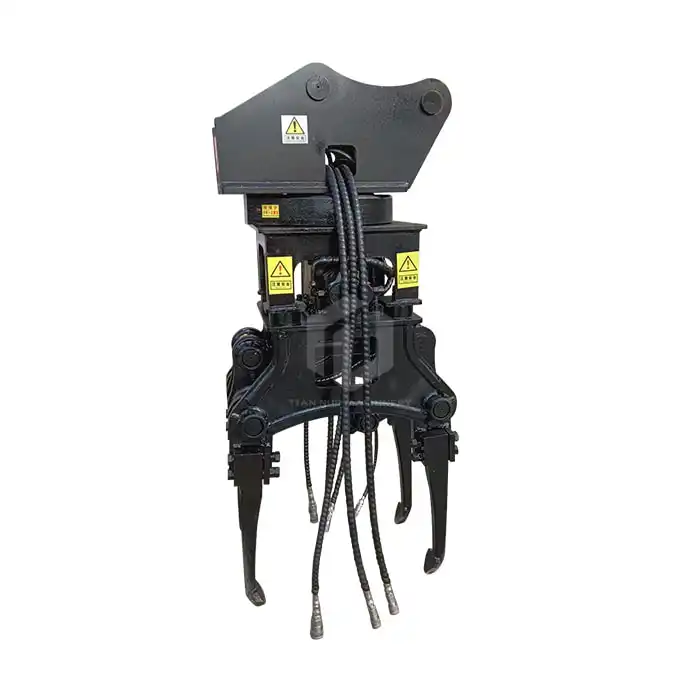
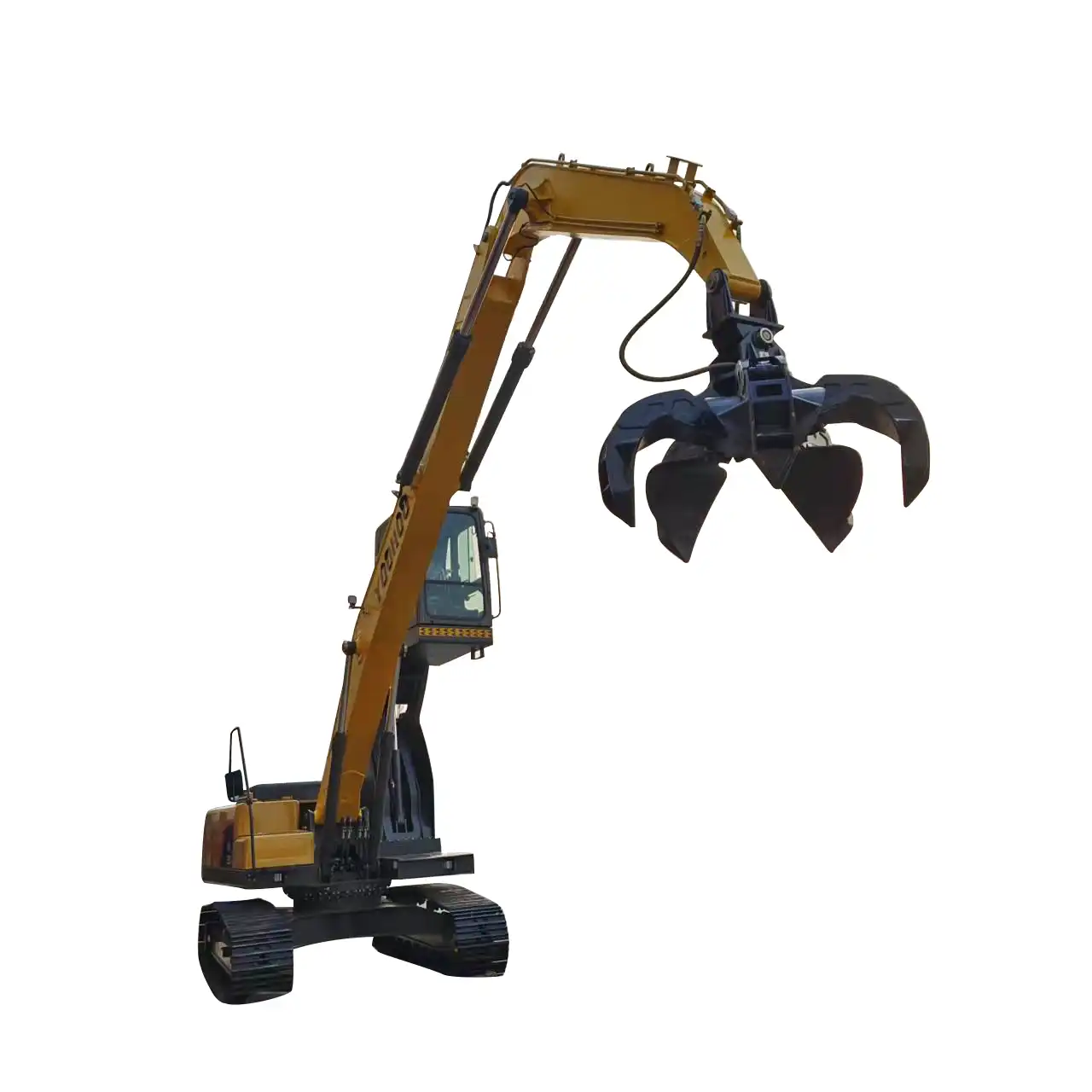
_1740558626327.webp)
